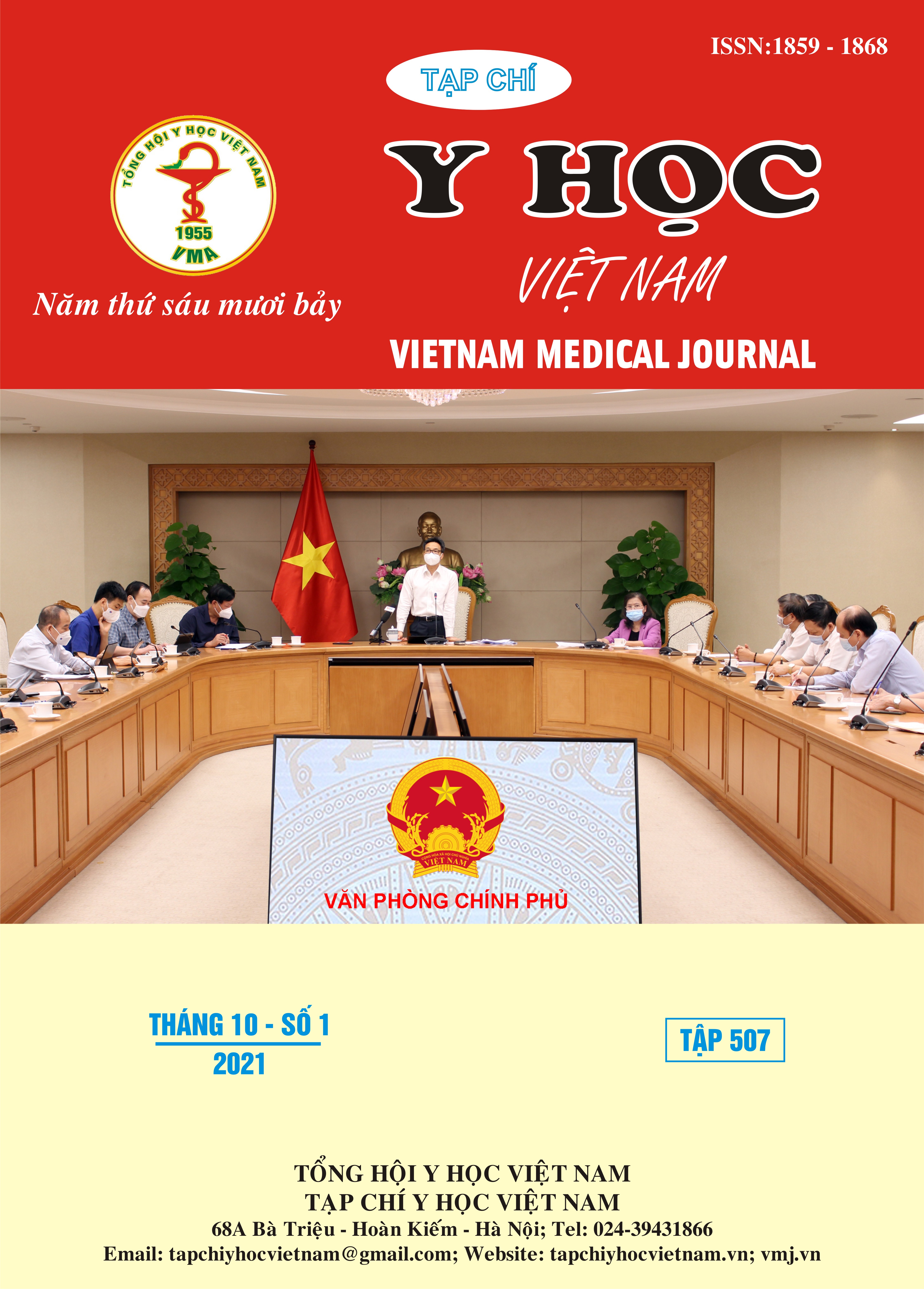RESULT OF MINIMALLY INVASIVE TRANSFORAMINAL LUMBAR INTERBODY FUSION FOR LUMBAR SPONDYLOLISTHESIS
Main Article Content
Abstract
Objectives: To assess the results of minimally invasive transforaminal lumbar interbody fusion (MIS-TLIF) for lumbar spondylolisthesis. Subjects and methods: A descriptive study of 51 cases of patients with single level lumbar spondylolisthesis received MIS-TLIF at the Spine Surgery Department, Viet Duc university Hospital from January 2019 to December 2020. Results: 51 patients (11 men, 40 women), mean age was 47,9 ± 12,9 years (from 15 to 72). Long-term outcome after surgery was assessed according to MacNab criteria at 12 months after surgery 44/51 patients re-examined (86,3%): Excellent: 28 (63,6%), good: 14 (31, 8%), fair: 2 (4,6%), poor: 0 (0,0%). Evaluation of clinical symptoms improvement after surgery: VAS (Visual Analogue Scale) back pain improved from 6,22 ± 1,06 to 1,89 ± 1,50, VAS leg pain improved from 5,90 ± 1,40 to 1,25 ± 1,50, ODI (Oswestry Disability Index) improved from 49,41 ± 8,00 to 15,18 ± 11,58. Evaluation fusion according to Bridwell: the rate of bone healing was 97,8%. Intraoperative complications: Nerve roots injury in 2 cases (3,9%). Conclusion: MIS-TLIF is a safe and effective procedure in the treatment of single level lumbar spondylolisthesis.
Article Details
Keywords
Lumbar spondylolisthesis, minimally invasive spine surgery, transforaminal lumbar interbody fusion
References
2. Audat Z., Moutasem O., Yousef K. và cộng sự. (2012). Comparison of clinical and radiological results of posterolateral fusion, posterior lumbar interbody fusion and transforaminal lumbar interbody fusion techniques in the treatment of degenerative lumbar spine. Singapore Med J, 53(3), 183–187.
3. Faundez A.A., Schwender J.D., Safriel Y. và cộng sự. (2009). Clinical and radiological outcome of anterior-posterior fusion versus transforaminal lumbar interbody fusion for symptomatic disc degeneration: a retrospective comparative study of 133 patients. Eur Spine J Off Publ Eur Spine Soc Eur Spinal Deform Soc Eur Sect Cerv Spine Res Soc, 18(2), 203–211.
4. Tsirikos A.I. và Garrido E.G. (2010). Spondylolysis and spondylolisthesis in children and adolescents. J Bone Joint Surg Br, 92-B(6), 751–759.
5. Okuda S., Oda T., Yamasaki R. và cộng sự. (2014). Posterior lumbar interbody fusion with total facetectomy for low-dysplastic isthmic spondylolisthesis: effects of slip reduction on surgical outcomes: clinical article. J Neurosurg Spine, 21(2), 171–178.
6. Parker S.L., Godil S.S., Mendenhall S.K. và cộng sự. (2014). Two-year comprehensive medical management of degenerative lumbar spine disease (lumbar spondylolisthesis, stenosis, or disc herniation): a value analysis of cost, pain, disability, and quality of life: clinical article. J Neurosurg Spine, 21(2), 143–149.
7. Dương Thanh Tùng (2020), Nghiên cứu điều trị trượt đốt sống đoạn thắt lưng cùng một tầng bằng phẫu thuật vít cuống cung qua da và ghép xương liên thân đốt, Luận án tiến sĩ Y học, Học viện Quân y.
8. Choi W.-S., Kim J.-S., Ryu K.-S. và cộng sự. (2016). Minimally Invasive Transforaminal Lumbar Interbody Fusion at L5-S1 through a Unilateral Approach: Technical Feasibility and Outcomes. BioMed Res Int, 2016, 2518394.


